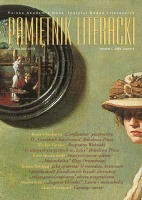
Keywords: VICTORIAN NOVEL; VICTORIAN THING CULTURE; “JANE EYRE”; “MARY BARTON”; “GREAT EXPECTATIONS”; “THE IDEAS IN THINGS”
The Victorian novel is brimming with things. Little critical attention has been so far drawn to their perplexingly complex meaning. Elaine Freedgood’s leading assumption in The Ideas in Things is that the things of realism are not merely realistic objects, but rather unexplored treasure troves of critical cultural knowledge. In her book, Freedgood “reads” objects with imperial and industrial histories in three Victorian novels. She analyses the meaning of mahogany furniture in Jane Eyre, calico curtains in Mary Barton and “Negro head” tobacco in Great Expectations. By employing Barthes’s concept of the reality effect and the contemporary theoretical perspectives on metonymy, as well as the Marxian notion of the commodity fetish, Freedgood looks into and portrays the characteristics of the Victorian thing culture.
More...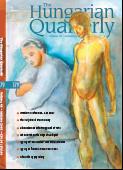
Gergely Angyalosi -The Mother as Mystery An Artist, a Robber, a Cook (Ashley Callahan, Julian Rubinstein, András Koerner)-Ivan Sanders Parallel Narratives (Éva Haraszti-Taylor)-Tibor Frank The Figures of Deprivation (István Kemény–Béla Janky–Gabriella Lengyel)-Balázs Wizner Back to the Future (Marcell Sebôk, ed.)-Mihály Laki
More...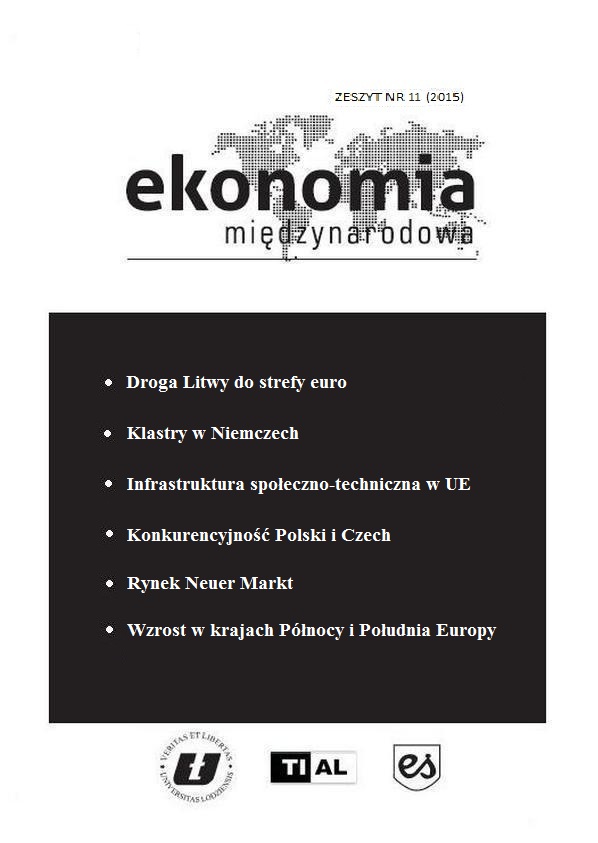
Keywords: investments; clusters; attractiveness; Germany
Although the expansive policy of Great Coalition might have negative impact on Germany’s public finance, claiming that this would significantly reduce country’s attractiveness seems exaggerated. Gaining foreign investors relies on offering the whole package of factors such as clusters. This article aims at evaluating development trends of German clusters. It proposes a classification drawing on firms population and labour force size. Obtained results indicate that most of German clusters have been expanding. Clusters’ closing/vanishing is the result of downsizing i.e. the faster decline of labour force than the number of active firm in East Germany, whereas in Germany it mainly reflects the relocation i.e. the steeper decline of cluster’s companies than working population. Disaggregation (growing number of cluster’s firm accompanied by reduction of labour force) outnumbers the opposite case i.e. the aggregation when decrease of firms number goes along with expansion of employees. Whereas the development of East Germany clusters does not differ substantially from the general German trend, the evolution of their investments may worry.
More...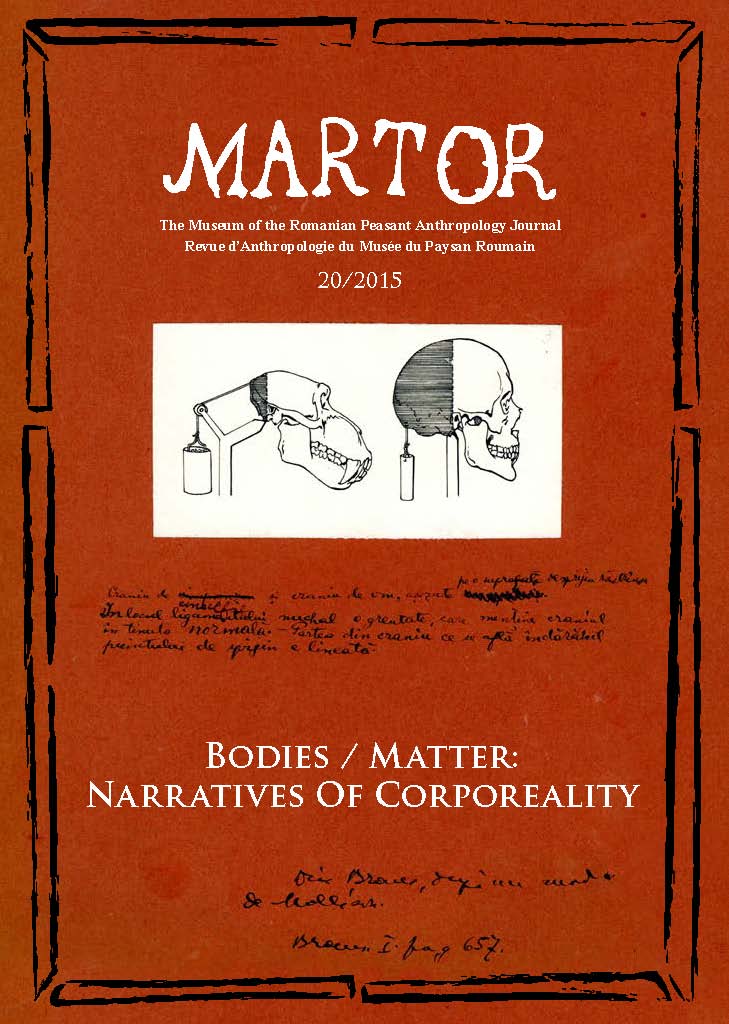
Keywords: anthropological collection; Francisc I. Rainer; interwar period; Bucharest; body
Normal bodies, deviant bodies, fragmentary, drawn or photographed bodies: all of these were collected and turned into scientific specimens by the anatomist and physical anthropologist Francisc I. Rainer in Interwar Bucharest (Romania). It is the purpose of this study to explore how this collection came into being, to understand Rainer’s treatment of bodies in a wider disciplinary context and ultimately to prompt reflection on the ethical dimension of such endeavor.
More...Keywords: Eneolithic;Romania;pottery;stone industry; animal bones; human
The present paper discusses and presents for the first time Hortensia Dumitrescu’s archaeological excavations from Bălăneşti (Buzău County) in 1943. The only published information on the subject appeared in the Encyclopaedia of Archaeology and Ancient History of Romania, volume I (Vl. Dumitrescu 1994) and in the monograph of the Stoicani-Aldeni cultural aspect (I.T. Dragomir 1983). The site of Bălănești is also quoted in Romanian archaeology in connection to Eneolithic funerary practices, mentioning the human skull (lying on a vessel associated with red-ochre) found at the site. The paper presents a detailed account of the old excavations, followed by the analyses of pottery, faunal remains and lithics, ending with a brief discussion on the chronology of the area within the Stoicani-Aldeni cultural aspect and its links with the neighbouring sites and cultures.
More...Keywords: experiential marketing; service quality; experiential value; future buying intentions; young customers; Gloria Jean's Coffee; M31;
The purpose of this study is to analyse the influence of experiential marketing on young customers’ experiential values and respectively on their satisfaction and word of mouth and revisit intentions. An instrument was developed to measure how the strategic experiential module (Schmitt 1999) and service quality perceptions of customers influence their experiential values. Data were gathered through questionnaires conducted with 450 respondents to diagnose young customers’ experiences in Gloria Jean's Coffees shops in North Cyprus. The structural equation modelling through partial least square (PLS) method results were acceptable in terms of reliability and validity. The empirical results revealed that, some of the strategic experiential modules and service quality perceptions have positive influences on customer experiences (functional and emotional). Results also show that customers’ satisfaction can induce positive post purchase behaviour. The results, managerial implications, and suggestions for future research are discussed in detail.
More...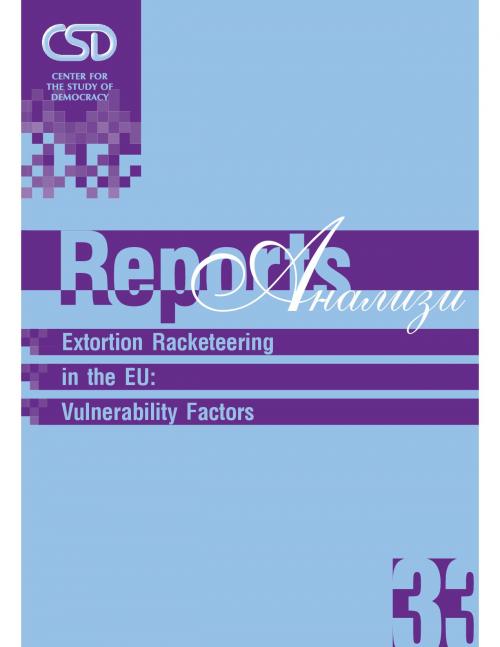
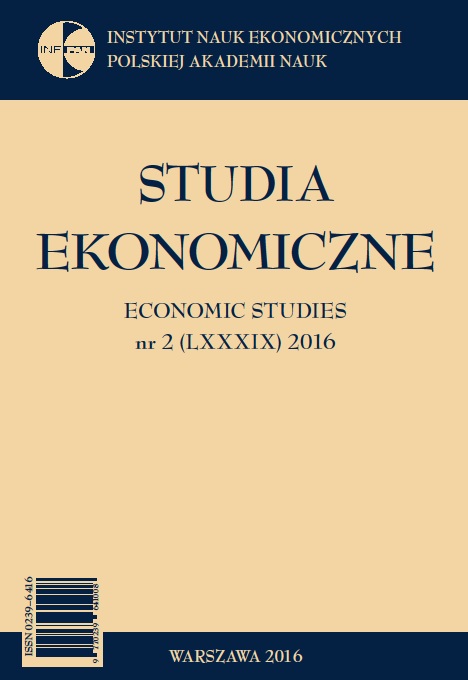
Keywords: technology gap; economic growth; crisis; accession; convergence; innovation and diffusion;European Union (EU)
The purpose of this paper is to study the interrelationships between economic fluctuations, dynamics of technology gap and convergence in the European Union. We presume that these processes are linked by innovation mechanisms, which are different in the markets that are at the technology frontier and in the catching up countries. In the former, we found a supply-based innovation mechanism and a demand-based innovation mechanism in the latter. This determines different adjustment processes in various phases of the cycle in these two groups of countries. We investigated the impact of technology gap on economic fluctuations (crisis) and that of economic fluctuations on technology gap reduction and convergence. We found that greater technology gaps amplified economic fluctuations whilst economic slowdowns (crises) impeded technology gap reductions and convergence. These results are explained by the interaction of different innovation mechanisms in the technology frontier and in the catching up countries. The principal factor of the gap reduction in less developed countries is the size of the gap itself (Gerschenkron’s effect). The per capita GDP convergence in the EU occurred mainly through technology gap reductions in the less developed countries where also the biggest structural changes in output and trade took place. Crisis slowed down the process of convergence and the accession of new countries speeded it up.
More...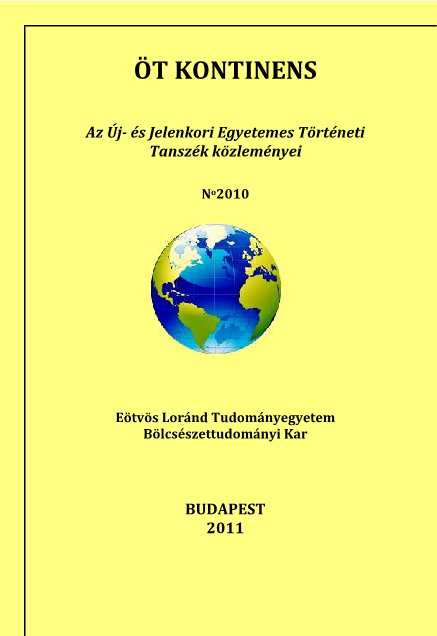
Keywords: Sixties era; hippie sub-culture; district of San Francisco; drugs; Krishna; Woodstock festival;
The author deals with the Sixties era in the United States. This period is most often remembered as African-American civil rights movement, anti-war activism, and the hippie sub-culture.
More...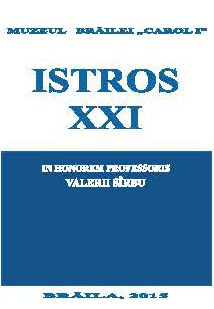
Keywords: helmets; Geto-Dacians; historical reconstructions; warrior elites.
The present endeavour originates in the lack or the sporadic use of the helmet during the activities of re-enactment, that have as a subject the epoch of the Dacian Kingdom. Originated in a lack of archaeological findings of such pieces of military equipment, the helmets are almost totally absent from the panoply of Dacian epoch's re-enacted characters. Although some of the least known weapons of those times, it is unlikely that the helmets would miss from the Dacian warriors' equipment, especially during the final period of the Kingdom.The main documentation source is represented by the funerary inventories of the aristocracy, the only social class, whose military arsenal was satisfyingly studied. Their tombs, through practiced rites and rituals partially shed a light over their lifestyle. In a way, in the funerary space, the community has reconstructed, as much as possible, what the deceased was during his life, whether we are talking about function, position or wealth. Among the weapons of these warriors, the helmets had a special importance, given by practical utility and by the identity function that they accumulated. Despite these considerations, the helmets, in close relationship with the funerary discretion of the elites from the Dacian period, are exceptional findings in the elite's tombs, rare themselves. Even if they were expensive, hard to reproduce, they should be visible in the funerary inventory, mirror of a panoply from during the life of a warrior. About this situation, the Romanian historiography did not arrive at a consensus yet. Several more clarifications bring the images of Trajan's Column, where numerous Dacian helmets were revealed, used by both the warrior aristocracy and by the inferior military structures, the enigmatic comati.And yet, the historical file of these pieces of equipment is still relatively solidified, so that in almost a decade of activities of re-enactment I had the opportunity and, we might say, the obligation to produce and wear helmets, to test their utility during the simulated fights between different groups of re-enacted warriors. They might say that a helmet was an indispensable piece of weaponry, in any moment of the battle, being extremely useful for both the protection against all types of projectile, and against the offensive weapons of the opponents.The helmets could not have missed from the endowment of professional warriors, as it is the sketched image of Decebal's Army. Therefore, there is no reason for which they might have missed from the amateur's equipment of living history, not only from the desire to respect the historical reality, but also from practical considerations, based on the frequency of accidents during these events. Therefore, the historians and archaeologists are those who are left to offer morphological and ornamental details for these pieces of equipment.
More...Keywords: turn of the 20th century; late 1980s; early 1900s;advertisement;advertising; slovenian newspapers; Laibacher Zeitung;Ljubljana; registry office; supply and demand office; Ignac Karel Pichler;
Modern advertising appeared in the age of industrialisation, in the process of the formation of a modern consumer society. The following discussion focuses on the beginnings of advertising in the Ljubljana newspaper Laibacher Zeitung in the first few decades of its publication. The marketing texts from this time paved the way for subsequent economic commercials. In the world of trade crafts any and all advertising was rejected, and the competition which associated the social status with market success was branded as evil. The artisans’ shop signs by no means represented advertising in the modern sense. They merely functioned like signposts, intended to provide information to transit passengers unfamiliar with the local business tradition. The transition to modern capitalism did not only call for the expanded production of goods and extension of the market principle to human workforce, but also for the expansion of this capitalist market. The industrial age factories were based on competition and aimed at the transregional market. As the division between producers and consumers took place, advertising became necessary in order for them to find each other. The following discussion also looks at the emergence of modern registry offices in Europe and in the Habsburg Monarchy, collecting and disseminating information, carrying out the exchange of goods and real estate, as well as providing information about the work and services opportunities. Special attention is paid to the relatively late establishment of Ignac Karel Pichler’s private supply and demand office in 1816 in Ljubljana. However, most of the research analyses advertising in the Ljubljana newspaper Laibacher Zeitung in the end of the 18th century and in the first decades of the 19th century.
More...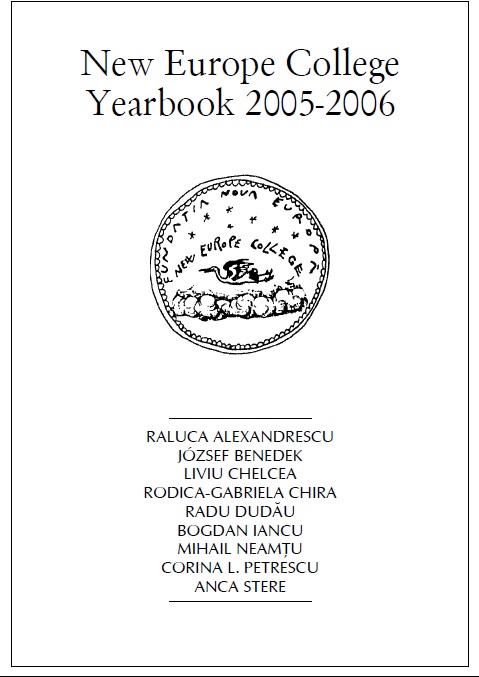
Keywords: graves;funeral finds;anthropological approach;zooarcheological analyse;10th century;
The first archaeological findings from the 10th–11th centuries in Cluj were uncovered in 1911, on no. 78 in Zápolya street (the current Gen. Traian Moşoiu street) (graves 1–8) and followed in 1942 (graves 9–11). Till now only one drawing has been published about the most frequently quoted from the age of the Hungarian conquest. Our study aims to present the finds and analyze it anthropologically and pale zoologically and tries to contribute with some actual questions to the research of Hungarian conquest in Transylvania. The finds of the grave: mounds, 10 arrowheads, quiver fragments, sabre, quiver suspender, pear-shaped stirrups, snaffle. The simply furnished grave arouses attention with the quiver suspender. On the basis of its typological parallels two questions emerge: 1. Did it come to Transylvanian basin through commercial relations? 2. Is it a sign of population migration ie. can it be related to the “first generation” of Hungarian conquerors? The authors do not exclude this possibility on the basis of the finds of some other graves as well, trying to arouse attention to a bit confused archeological interpretation of the notion “first generation”. What does it really mean? At the first sight, it might seem as an easy thing to establish. The classic answer was the first generation consists of those members of the communities in late 9th century born in the Atelcuzu area, mentioned by Byzantine emperor Constantine VII Porfirogenet, already buried in the Carpathian basin. It is or it should be obvious that in the year 895 or 896 several age categories must have reached the Carpathian basin, ranging from infants to seniors, namely people who could expired in any year, be it 900 or 945–950. It is obvious that in this interval their material culture could have changed profoundly, totally or not at all, yet biologically all members belong to the same first generation. In this respect, this generation needs to be differentiated from the biologic and the cultural point of view. The bone material from Zapolya Street is in bad condition, although we could made morphological measurements for age and sex determination, stature, demography and pathological investigation. In analyzing the human skeleton we applied for the methods of Martin-Saller, Miles, J. Nemeskéri, K. Éry, Alekszejev-Debets e.g. Using classic anthropological approaches we analyzed ecto- and end cranial sutures, situation of teeth, measurements on skull and hypostasis phases of the epiphysis ends. The characters of the skull (glabellas occipital bone, mandible e.g.) and dimensions of long bones show a man (+1 after K. Éry). The ecto- and end cranial sutures of the skull and situation of teeth present signs of and adult person (35–40 years old). In one case I found pathological alteration: recovered fracture of the right tibia (this type of fracture is happening often). In conclusions, the human skeleton from 10th grave has similar characters with the 44th grave from Hunedoara „Kincseshegy”. In both cases the skull is dolichocranic according to the Nordic and Riazan anthropological type. The deceased had medium stature and are epigenetically marks on the skull (Worm bones) in both cases. The examination of the men- and animal-bones found in the 10–11th century graves in the Transylvanian Basin, in Partium and in Banat is on a very elementary level even after more than a century research. The horse bones of the 10th grave excavated in 1942 were found in anatomical position. On the basis of the denture and the morph metrical features it could be a middle-aged, 7–8 year-old stallion which sustained injury on its shin, probably during jumping. A bone of a presumably juvenile sheep also belonged to the furniture.
More...Keywords: emancipation of woman; dentist; dental technician; Abrud; Budapest
Exact and accurate data about life and activity carried out in the last quarter of the XIXth century and first half of XXth century by the first woman dentist (dental technician) from the area of the Apuseni Mountains, Vilma Papp, we do not hold. Subsequent documentary researches will probably reveal new documentary information on the subject. However, her figure, activity and fate can be pieced together due to these documentary pieces that entered the collection of the museum from Alba Iulia, following an interesting donation made by Mrs. Valentina Achim, from Alba Iulia, who as wife of Vilma Papp's nephew, also accounted more facts from the biography of the one we evoke here.Vilma Papp was born in Abrud, in July 1867. She got married with Suciu, and they had three children (Valeria, Cornel and Iudita). We do not know where Vilma studied dental technique, only that she trained in the office of physician Dr. D. Neufeld from Budapest. She returns in Abrud to take up her job as a dentist opening her own office. Of the old dental office, we retrieved several patrimonial items: the lower part of the dental drill engine held by dentist Vilma Papp, several objects used by the dental technician, some books and specialised flyers, photos of the epoch, birth certificates, but also some personal items (holder for hair brushes, fox fur)
More...Keywords: eco-innovators; determinants; probit model; environmental regulation; internal capabilities;
This paper analyses the main determinants influencing different types of eco-innovations and eco-innovators in Spain. We differentiate between two types of eco-innovations (process vs. product and new-to-the-market (NTM) vs. new-to-the-firm (NTF)) and two different types of ecoinnovators (large vs. small and old vs. new firms). Our findings show that new firms are not more eco-innovative and that smaller firms are certainly less eco-innovative. Although the environmental regulation variable is generally a main driver of eco-innovation, there are specific drivers for some eco-innovator and eco-innovation types. This is the case with internal innovation capabilities, which clearly influence small and new firms to eco-innovate, in contrast to large and old firms. Those capabilities are also a driver of NTM eco-innovation versus NTF eco-innovation. Involvement in external knowledge flows and cooperation is also a crucial variable for small firms to eco-innovate and a main driver of NTM versus NTF eco-innovation. Contrary to expectations, there are a few differential drivers for products vs. process eco-innovations. Energy/material cost reductions and environmental regulation influence both eco-innovation types, whereas the demand-pull from the market is absent for both, probably due to a relatively low degree of environmental consciousness and/or willingness to pay for eco-products by its consumers.
More...
Keywords: Assyria; Persia; Cyprus; Cypriot kings
At the end of the eighth century, Cyprus came under Assyrian control. For the following four centuries, the Cypriot monarchs were confronted with the power of the Near Eastern empires. This essay focuses on the relations between the Cypriot kings and the Near Eastern Great Kings from the eighth to the fourth century BC. To understand these relations, two theoretical concepts are applied: the centre-periphery model and the concept of suzerainty. From the central perspective of the Assyrian and Persian empires, Cyprus was situated on the western periphery. Therefore, the local governing traditions were respected by the Assyrian and Persian masters, as long as the petty kings fulfilled their duties by paying tributes and providing military support when requested to do so. The personal relationship between the Cypriot kings and their masters can best be described as one of suzerainty, where the rulers submitted to a superior ruler, but still retained some autonomy. This relationship was far from being stable, which could lead to manifold misunderstandings between centre and periphery. In this essay, the ways in which suzerainty worked are discussed using several examples of the relations between Cypriot kings and their masters.
More...The Balkan States Exhibition mounted in London in 1907 was the greatest international presentation, both as regards the quantity and the quality of its exhibits, of Serbian products and achievements from the fields of industry, agriculture, science, arts and culture held up to that time. The total number of visitors exceeded a million and two hundred thousand people. A large number of Serbian products was awarded high prizes and special commendations. It was shown that many Serbian goods (woollen cloths, furniture, prunes, marmalade, drinks) could compete successfully with the products of eminent European producers. The London Exhibition marked in a sense a comeback of Serbia after the three-year long isolation following the assassination of King Aleksandar Obrenovi} and his wife.
More...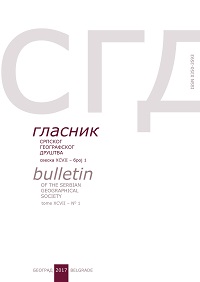
Keywords: tourist valorization; architectural tourist resources; cultural historic heritage; Sabac;
Sabac is an important centre in the cultural geography of Serbia. A great number of architectural buildings that are listed in cultural-historic heritage of national interest were built in the city. The goal of this work is to note and highlight the values of architectural cultural heritage of Sabac, which can be valorized for the purpose of tourism. The restoration, protection and inclusion of architectural values in the tourist offer of Sabac, combined with the other types of city tourism such as the event and cultural tourism, contribute to the affirmation of this city as a tourist centre of West Serbia.
More...